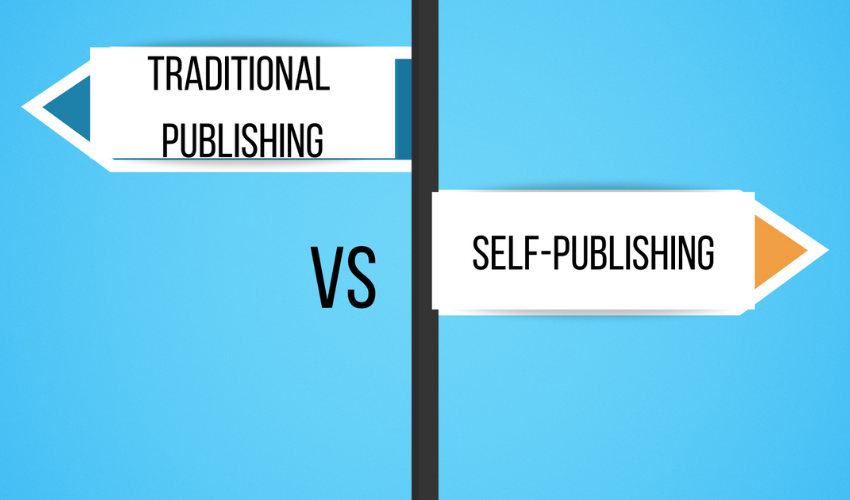Traditional Publishing versus Self-Publishing
The earliest known narrative was published in the 18th century BCE. Later, when people could write, they manually wrote down stories in order to preserve and transmit them. The printing press, which was a revolutionary piece of equipment for broadly disseminating literature, was invented in 1440.
As a result, the traditional publishing sector as we know it today was born whereas self-publishing began in the 1990s when eBooks began to be sold online.
Traditional Publishing
Working with a traditional publisher to manage the production and distribution of your book is known as traditional publishing. Advances and royalties are frequently paid in traditional publishing. The advantage of traditional publishing is that it will help you build a stronger network of contacts and distribution channels. In the publishing world, traditional publishers are giants. If you are offered a standard book deal, the publisher will use its contacts to arrange interviews and events and assist in getting your book into book shops all over the nation.

However, keep in mind that traditional publishers have marketing budgets that determine how much money is spent on marketing each release. As a result, a traditional publishing arrangement does not ensure that the publisher will exert the maximum amount of marketing effort on your behalf.
The biggest drawback of traditional publication is how little control you have over the creative process. If you’re an author with a vision, the conventional path can be frustrating.Typically, traditional publishers are more interested in presenting the tale they believe will sell than they are in telling your story. As a result, you can be asked to edit a manuscript that you don’t quite agree with or even accept a cover that you’re not all that fond of.
In general, if you choose this path, you usually require an agent. Because of this, not everyone is able to publish traditionally. Even if you have the best manuscript in the world, most traditional publishers won’t even look at it until a literary agent submits it. Theoretically, these agencies ought to have an eye for talent and wish to represent your work if it truly is the best one ever written, but that doesn’t always happen.
Self-Publishing
When you self-publish, you must pay a fee up front for the book’s release. The book has a smaller distribution network, but you maintain complete creative control. A promising development is that more self-publishing businesses are beginning to match the selection of traditional publishers.

The fact that you have more control over the process is the largest advantage. Self-publishing is the most secure approach to make sure you get to tell your tale, if you want to do so. You have complete creative control when self-publishing, including layout, cover design, and other aspects. If you wish, you can use a variety of tools to help you, including expert editing, marketing materials, and more, but the final say in how your book appears is yours.
Self-publishing offers much better royalties. The typical income for a commercially published book is around 10%, whereas the average royalty for self-publishing is up to 75%. In order to utilize the publisher’s marketing and promotion tools, a traditionally published author must give up a sizable amount of his or her earnings. It’s an intelligent risk. This is a chance for the self-published author who isn’t scared to work hard and make a few sales on their own. Even if you aren’t a well-known author, there are plenty of ways to promote your self-published book, from speaking engagements to social media promotion.
In the argument between self-published and traditionally published works, there is no right or wrong response. It’s more important to consider what is best for you.
If you wish to publish your own book, we can assist you with all your publishing and marketing needs with years of experience in this field. You can contact us here.


Leave a Reply